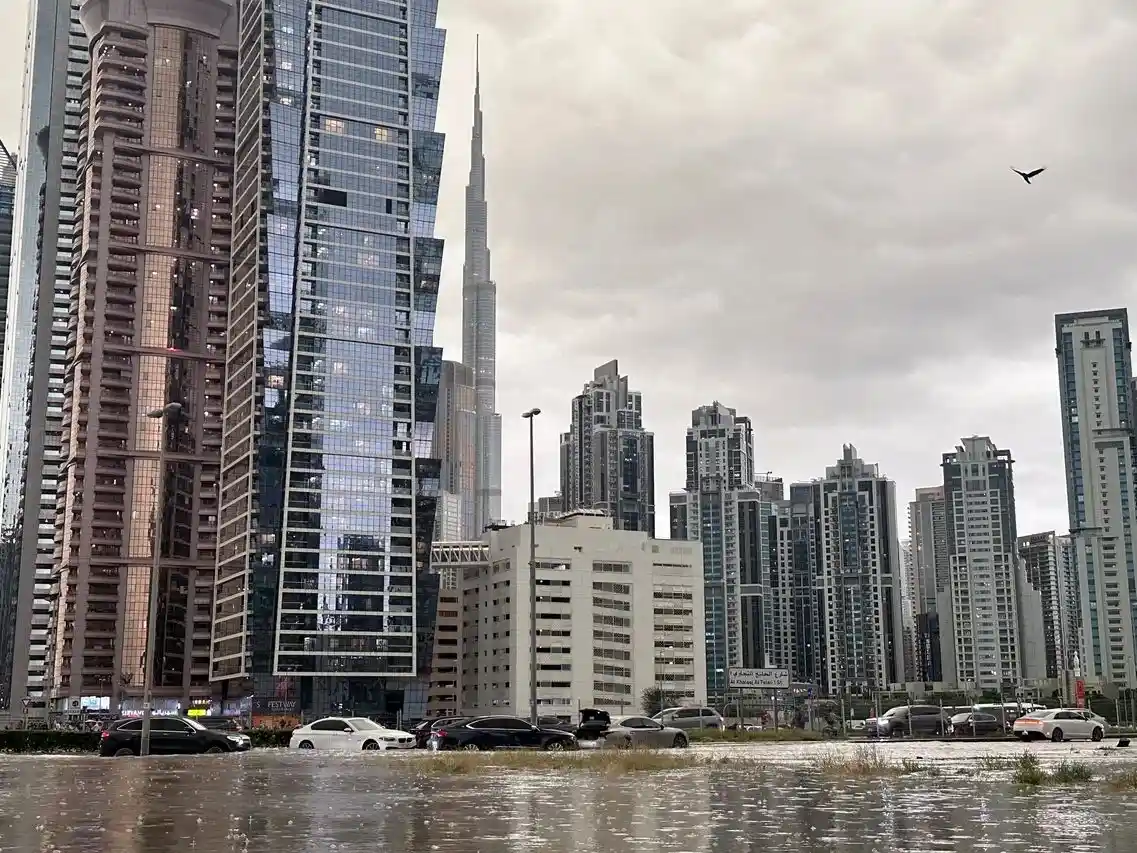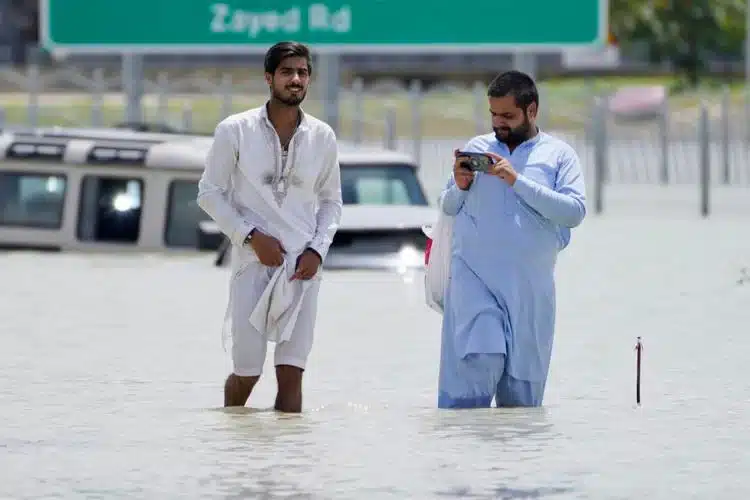Dubai Airport and Streets Submerged Amid UAE’s Record-Breaking Rainfall

The United Arab Emirates (UAE) experienced its heaviest rainfall ever recorded on Tuesday, with floods disrupting travel and daily life across the desert nation. The world’s busiest airport for international travel was severely disrupted by the UAE’s record-breaking rainfall, which also flooded Dubai’s international airport.
(Also read Climate Change Report Forecasts 19% Decline in Average World Income Over Next 26 Years.)
UAE’s Record-Breaking Rainfall Unleashes Absolute Chaos
The incident was dubbed a “historic weather event” by the state-run news service WAM, surpassing all recorded weather since data collection started in 1949. Rain also affected other Gulf countries such as Bahrain, Oman, Qatar, and Saudi Arabia, but the UAE faced the most acute impact.
Six or seven cloud-seeding flights were carried out by the National Center for Meteorology prior to the rains, which sparked rumours that the procedure might have contributed to the deluge. However, experts argue that the strength of the storm was such that cloud seeding would not have been the primary cause of the flooding.

The flooding brought severe challenges to Dubai International Airport, with standing water on taxiways and disrupted flight schedules. Long-haul carrier Emirates and low-cost airline FlyDubai experienced major disruptions as a result. Many roads in Dubai flooded, including parts of the Sheikh Zayed Road, causing difficulty for residents and workers.
The UAE government closed schools and implemented remote work as a precaution. The officials dispatched tanker trucks to extract water from areas that had been flooded. An elderly guy, seventy years of age, lost his life at Ras al-Khaimah as floodwaters carried his car away.

Heavy rains also affected neighbouring Oman, where at least 19 fatalities were reported, including 10 youngsters and an adult who washed away in a car. The events prompted condolences from regional leaders.
Overall, the extreme weather highlighted the impact of climate change on the region, with more intense storms, droughts, and floods becoming increasingly common.
LATEST NEWS
DISCOVER MORE






